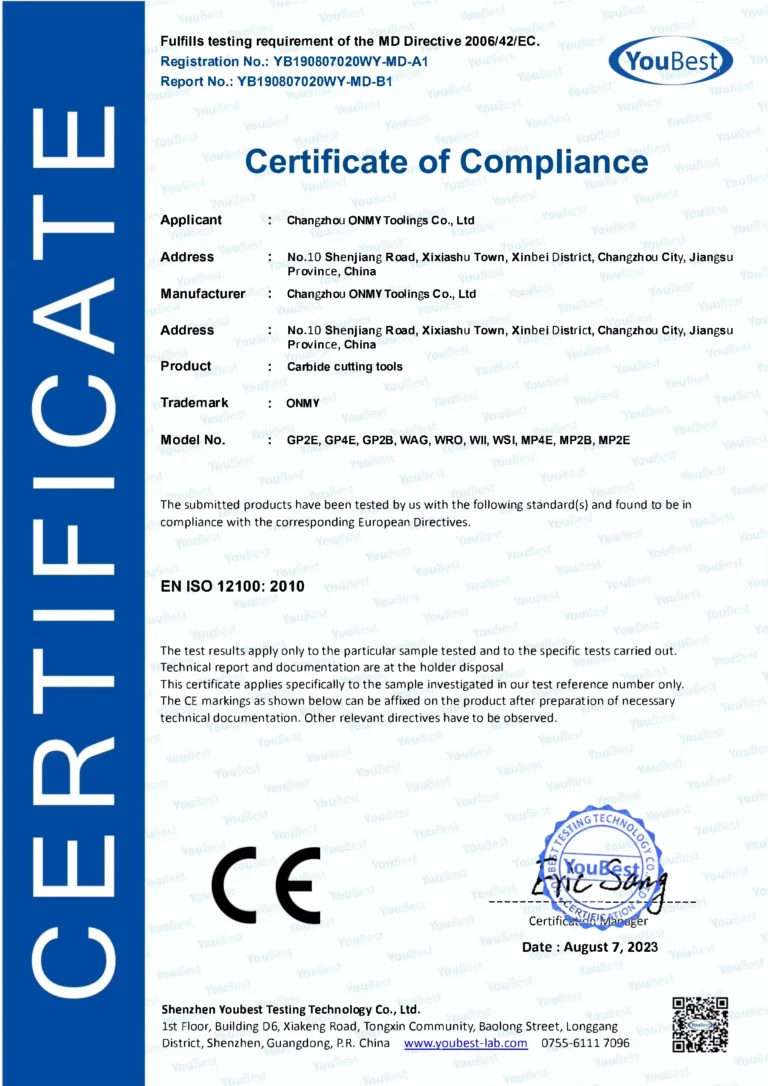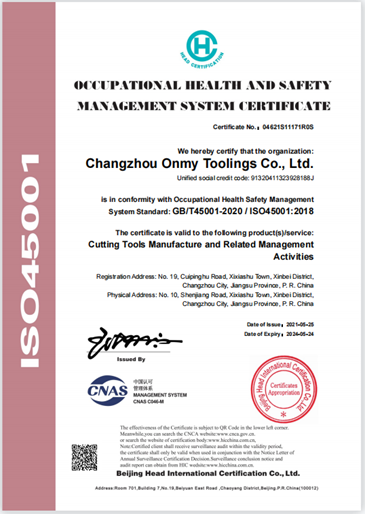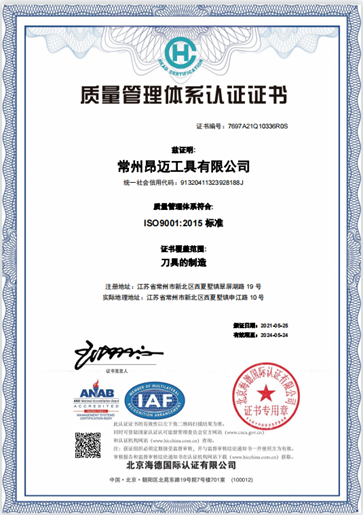Fresa de 4 hélices
Una fresa de 4 hélices es una herramienta de corte rotativa utilizada habitualmente en operaciones de fresado para el mecanizado de materiales como metal, plástico y madera. Presenta cuatro filos de corte helicoidales (canales) que recorren su cuerpo cilíndrico, permitiendo un arranque de material eficaz y acabados superficiales suaves. El diseño de cuatro filos proporciona un equilibrio entre la evacuación de virutas y la estabilidad de corte, lo que la hace adecuada para una amplia gama de aplicaciones. Estas fresas pueden realizar tanto operaciones de corte lateral como de penetración, y se utilizan a menudo para tareas como ranurado, perfilado y contorneado en diversas industrias, como la manufacturera, la aeroespacial y la de automoción.
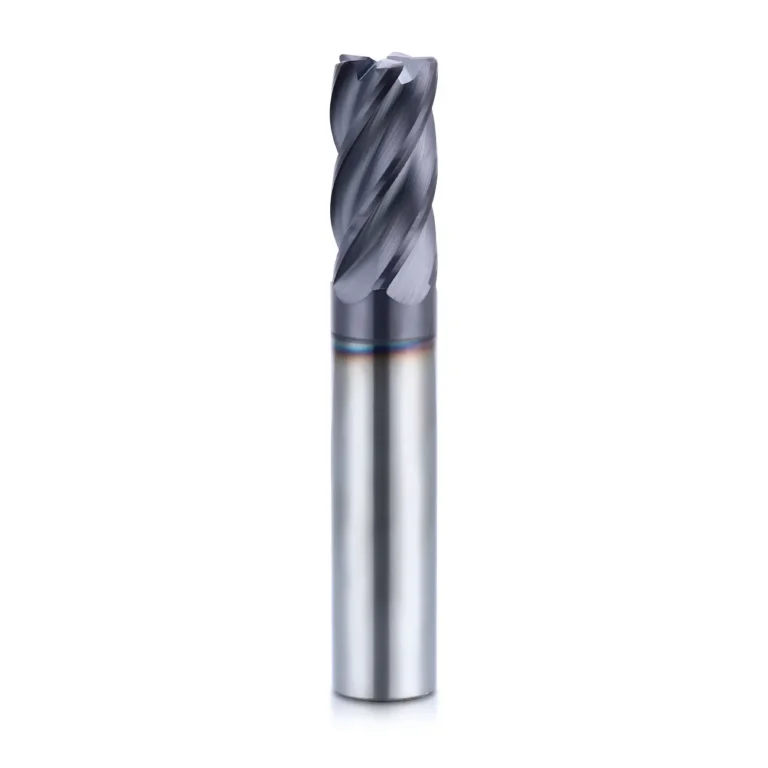
Fresa de 4 hélices Aplicación
Las fresas de 4 hélices tienen una amplia gama de aplicaciones en el mecanizado. He aquí un breve resumen de sus principales usos:
- Operaciones generales de fresado
- Ranurado y fresado de ranuras
- Perfilado y contorneado
- Fresado lateral
- Corte por inmersión
- Pases de acabado
- Mecanizado de materiales más duros
- Mecanizado de alta velocidad
- Trabajos de precisión en las industrias aeroespacial y del automóvil
- Fabricación de moldes y matrices
Estas fresas son especialmente eficaces cuando se trabaja con metales como el acero, el acero inoxidable y el aluminio. Suelen elegirse por su capacidad para producir acabados suaves y mantener la precisión dimensional.
Fresa de 4 hélices Características
Las fresas de 4 filos son una herramienta de corte versátil que se utiliza habitualmente en diversas aplicaciones de mecanizado. He aquí cuatro de sus principales características:
1. Mayor grosor y resistencia del núcleo
- En comparación con las fresas con menos canales, las fresas de 4 canales tienen un núcleo más grueso.
- Este núcleo más grueso proporciona una mayor rigidez, reduciendo la desviación de la herramienta durante el corte.
- Esto se traduce en una mayor precisión y un mejor acabado superficial.
2. Carga reducida de virutas
- Los cuatro filos distribuyen la carga de corte de forma más uniforme.
- Esta reducción de la carga de viruta por flauta da como resultado un corte más suave.
- Ayuda a evitar la acumulación de virutas y mejora la eficacia general del corte.
3. Aplicación versátil
- Las fresas de 4 hélices son adecuadas para una amplia gama de materiales, como hierro fundido, acero para herramientas, acero inoxidable y aceros con tratamiento térmico.
- Pueden utilizarse para diversas operaciones de mecanizado, como ranurado, perfilado y embolsado.
4. Mejor acabado superficial
- Debido a la menor carga de viruta y a la mayor rigidez, las fresas de 4 filos producen mejores acabados superficiales en comparación con las fresas de menos filos.
- Esto es especialmente beneficioso para aplicaciones en las que se requiere una superficie lisa.
La mayoría de los proveedores chinos tienen la misma calidad, pero nosotros no somos iguales, ¿por qué?


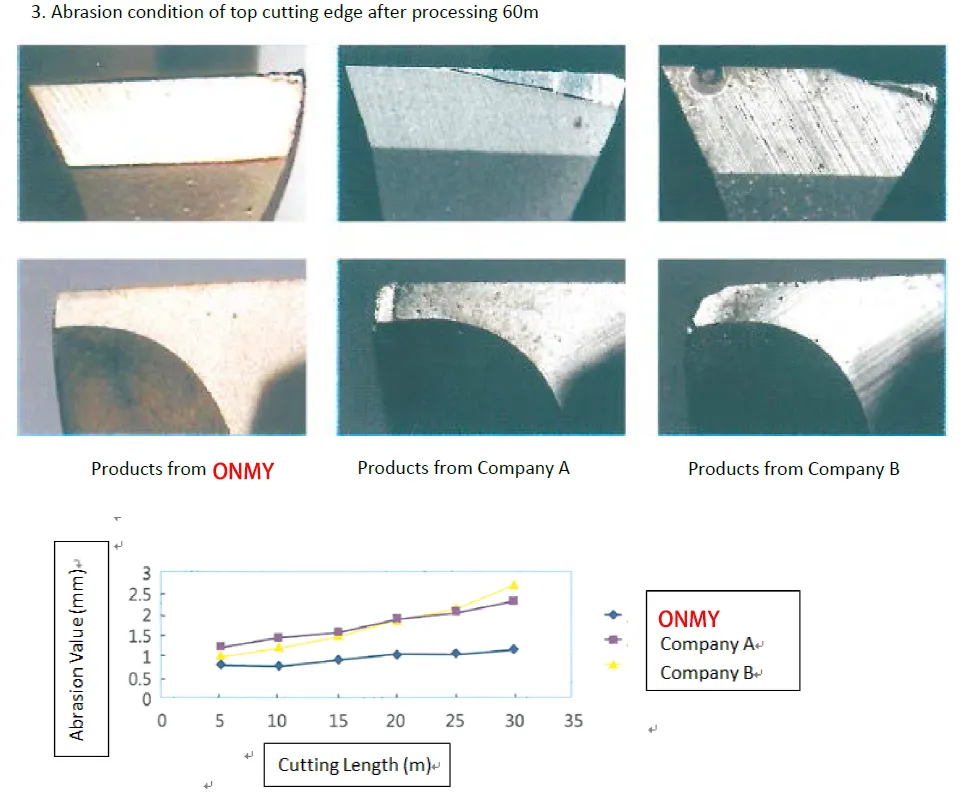
catálogo de fresas de 3 hélices
El catálogo de fresas de mango de 3 filos es una herramienta profesional que proporciona información sobre las fresas de mango de 3 filos a una amplia gama de usuarios.
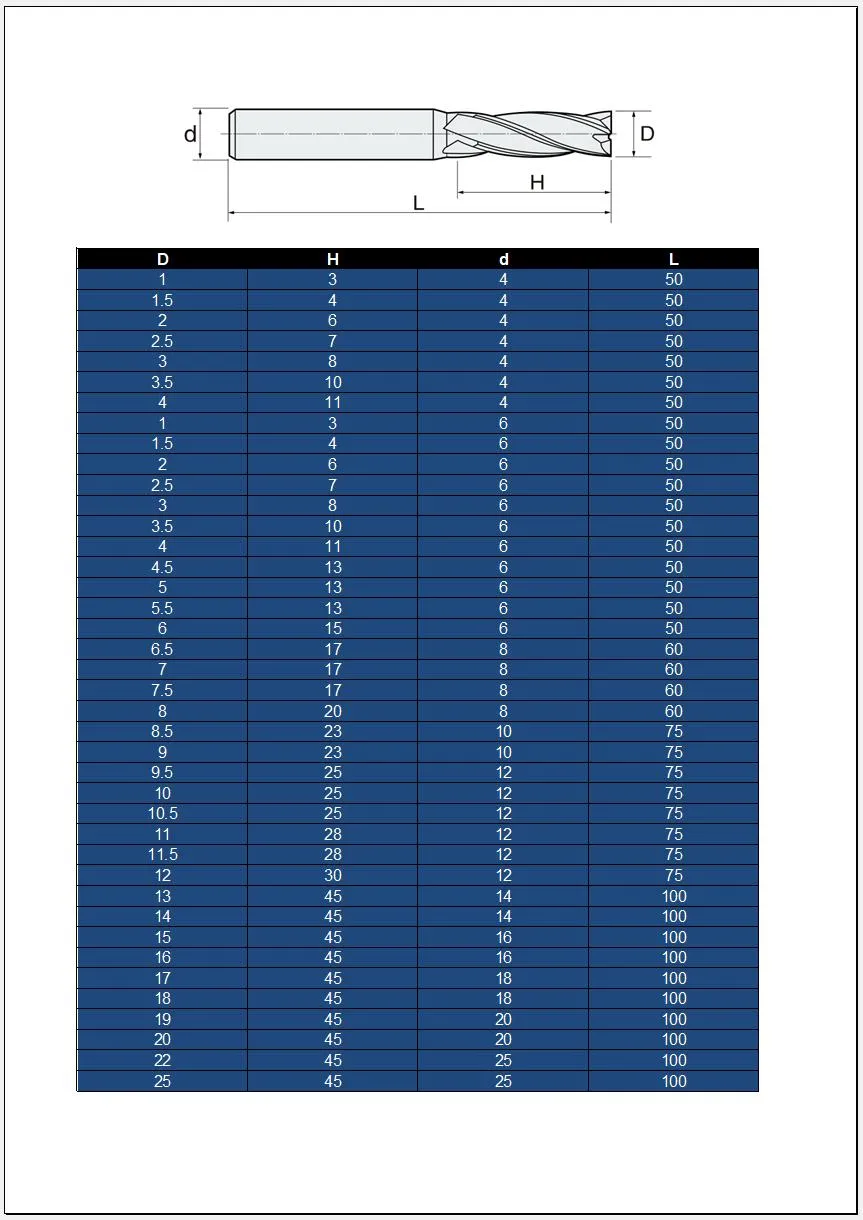

La diferencia de ONMY TOOLINGS
¿Qué distingue a nuestras fresas de un solo filo? Es nuestra combinación única de:
Formulaciones avanzadas de carburo
Utilizamos mezclas patentadas de carburo de micrograno optimizadas para ofrecer solidez y resistencia al desgaste.
Geometrías innovadoras
Nuestros diseños de estrías patentados maximizan la evacuación de virutas y minimizan las fuerzas de corte.
Recubrimientos de vanguardia
Aplicamos revestimientos de PVD con nanocapas que mejoran la resistencia al calor y reducen la fricción.
Rectificado de precisión
Nuestras rectificadoras CNC multieje alcanzan tolerancias tan ajustadas como ±0,0005 pulgadas.
Certificación de fábrica
Estas certificaciones no son meras insignias: son la garantía de una calidad constante y de primer nivel en todas las herramientas que producimos. Nuestro proceso de control de calidad incluye la inspección 100% de dimensiones críticas y pruebas avanzadas de resistencia al desgaste para garantizar que cada herramienta cumple nuestros exigentes estándares.

Nuestro viaje a la excelencia
Nuestra historia comenzó en un pequeño taller con un gran sueño: crear las mejores fresas de punta de toro del mundo. En la actualidad, contamos con unas modernas instalaciones de 50.000 pies cuadrados equipadas con lo último en tecnología de rectificado CNC y avanzados sistemas de recubrimiento. Pero nuestra verdadera fuerza reside en nuestro equipo de apasionados ingenieros y expertos artesanos que vuelcan su experiencia en cada herramienta que producimos.
¿Por qué conformarse con soluciones estándar cuando puede disponer de fresas de mango personalizadas adaptadas a sus necesidades específicas? Nuestro equipo interno de investigación y desarrollo está constantemente ampliando los límites de lo que es posible en tecnología de mecanizado. Colaboramos con las principales universidades y socios industriales para mantenernos a la vanguardia de la ciencia de los materiales y el diseño de herramientas de corte.
No se fíe sólo de nuestra palabra. Esto es lo que dicen nuestros clientes satisfechos:
Mi cliente feliz

Obtenga ahora su presupuesto personalizado
P.D. ¿Le hemos dicho que ofrecemos descuentos por volumen? Cuantos más pedidos haga, más ahorrará.
- Precios directos de fábrica imbatibles: Elimine a los intermediarios y ahorre hasta 40% en comparación con los precios al por menor. Nuestro eficiente proceso de fabricación nos permite ofrecer la máxima calidad a precios competitivos.
- Entrega rapidísima: Gracias a nuestro proceso de producción racionalizado, ofrecemos plazos de entrega líderes en el sector. Obtenga sus fresas personalizadas en tan solo 7 días. Mantenemos un amplio inventario de tamaños estándar para su envío inmediato.
- Servicio personalizado: Nuestro equipo de ingenieros expertos está listo para ayudarle a encontrar la solución perfecta para sus desafíos de mecanizado únicos. Ofrecemos consultas gratuitas para analizar sus necesidades específicas y recomendarle las especificaciones de herramienta ideales.
Preguntas frecuentes
- Para operaciones de desbaste en materiales más blandos: Una fresa de 3 hélices podría ser una buena elección.
- Para operaciones de acabado o materiales más duros: A menudo se prefiere una fresa de 4 hélices
Las fresas de 4 hélices se utilizan principalmente para:
- Operaciones generales de fresado en metales y plásticos
- Ranurado y corte de ranuras
- Perfilado y contorneado de formas complejas
- Fresado lateral para crear bordes rectos
- Pasadas de acabado para conseguir superficies lisas
- Corte por inmersión para crear agujeros o bolsillos
- Operaciones de mecanizado de alta velocidad
- Trabajo de precisión en piezas aeroespaciales y de automoción
- Fabricación de moldes y matrices
- Mecanizado de materiales más duros como el acero inoxidable
Son favoritas por su equilibrio entre eficacia de corte y calidad de acabado superficial, especialmente en materiales como el acero y el aluminio. El diseño de cuatro canales permite velocidades de avance más rápidas en comparación con las fresas de dos canales, al tiempo que mantiene una buena evacuación de la viruta.
Fresas de 2 hélices:
- Mejor evacuación de las virutas
- Ideal para materiales más blandos (por ejemplo, aluminio, latón, plásticos)
- Preferido para bolsillos y ranuras profundas
- Posibilidad de mayores velocidades de avance
- Mejor para corte por inmersión
- Más adecuado para operaciones de desbaste
Fresas de 4 hélices:
- Más filos de corte para acabados más lisos
- Mejor para materiales más duros (por ejemplo, acero, acero inoxidable)
- Mayor estabilidad y menos vibraciones
- Superior para operaciones de fresado lateral
- Mejor para mantener tolerancias estrechas
- Más adecuado para operaciones de acabado
Diferencias clave:
- Juego de virutas: 2 flautas mejor
- Acabado superficial: 4 estrías generalmente superior
- Idoneidad del material: 2 estrías para materiales blandos, 4 estrías para materiales duros
- Velocidad de corte: 4 canales normalmente más rápido
- Aplicación: 2 estrías para desbaste, 4 estrías para acabado
Sí, las fresas de 4 hélices pueden utilizarse para aluminio, pero no siempre son la mejor opción. He aquí una breve explicación:
- Posible, pero no ideal: las fresas de 4 filos pueden mecanizar aluminio, especialmente en operaciones de acabado.
- Evacuación de virutas: La principal preocupación es que el aluminio tiende a producir virutas largas y filamentosas. Las fresas de 4 canales tienen menos espacio entre canales para la evacuación de virutas.
- Acumulación de calor: Más estrías pueden conducir a una mayor generación de calor, lo que es problemático con el aluminio, ya que puede hacer que el material se vuelva gomoso.
- Mejores alternativas: Las fresas de 2 ó 3 hélices suelen ser las preferidas para el aluminio. Ofrecen una mejor evacuación de la viruta y disipación del calor.
- Casos específicos: El mecanizado de aluminio a alta velocidad o las pasadas de acabado en las que el acabado superficial es crítico podrían beneficiarse de una herramienta de 4 estrías.
- Recubrimientos: Si utiliza una fresa de 4 hélices en aluminio, busque las que tengan recubrimientos adecuados para reducir la fricción y el calor.
En resumen, aunque es posible utilizar una fresa de 4 hélices en aluminio, a menudo no es la primera opción debido a problemas de evacuación de virutas. La mejor herramienta depende de la operación y los requisitos específicos.
- Eliminación de material a granel: Eliminación rápida de grandes cantidades de material de las piezas de trabajo.
- Desbaste: Corte agresivo para crear formas rugosas o cavidades.
- Pasadas de desbaste: Preparación de una pieza para posteriores operaciones de acabado.
- Altos índices de arranque de metal (MRR): Maximización del volumen de material eliminado por unidad de tiempo.
- Mecanizado de materiales más duros: Eficaz en materiales duros como el acero y el acero inoxidable.
- Creación de cavidades: Ahuecar rápidamente zonas de una pieza.
- Arranque de virutas: Reducción rápida del tamaño de las existencias en bruto.
- Fresado adaptativo: Se utiliza en las estrategias modernas de CNC para una eliminación eficaz del material.
- Ranurar: Creación de ranuras o surcos rugosos.
- Preparación para el acabado: Preparación de la pieza para el dimensionado final y el acabado superficial.
Generalmente, se prefieren las fresas de 2 filos para el mecanizado de aluminio.
- Evacuación del chip: El aluminio produce virutas largas y fibrosas. Los espacios más grandes entre los filos de una fresa de 2 filos permiten una mejor evacuación de la viruta, evitando que se acumule y se atasque.
- Velocidad de arranque de material (MRR): Aunque las fresas de 4 filos pueden alcanzar teóricamente una mayor MRR, el problema de la evacuación de la viruta a menudo compensa esta ventaja en el mecanizado del aluminio.
- Vida útil de la herramienta: En muchos casos, las fresas de 2 filos pueden proporcionar una mayor vida útil de la herramienta en aluminio debido a la reducción de la tensión en los filos de corte.
Excepciones
Dicho esto, hay situaciones en las que se podría considerar una fresa de 4 hélices para aluminio:
- Operaciones de acabado: Para acabados muy finos, puede ser preferible una fresa de 4 hélices debido a su acción de corte más suave.
- Fresas de pequeño diámetro: En algunos casos, con fresas de pequeño diámetro, una de 4 filos puede ofrecer mejor rigidez.
- Mecanizado de alta velocidad (HSM): En condiciones específicas de HSM, una fresa de 4 hélices puede ser eficaz.
En última instancia, la mejor elección depende de factores específicos como:
- Aleación de aluminio
- Condiciones de corte (velocidad, avance, profundidad de corte)
- Acabado superficial deseado
- Disponibilidad de herramientas
